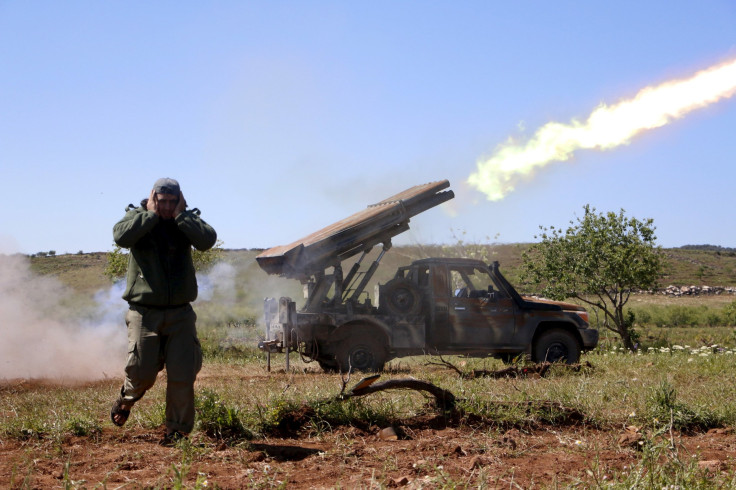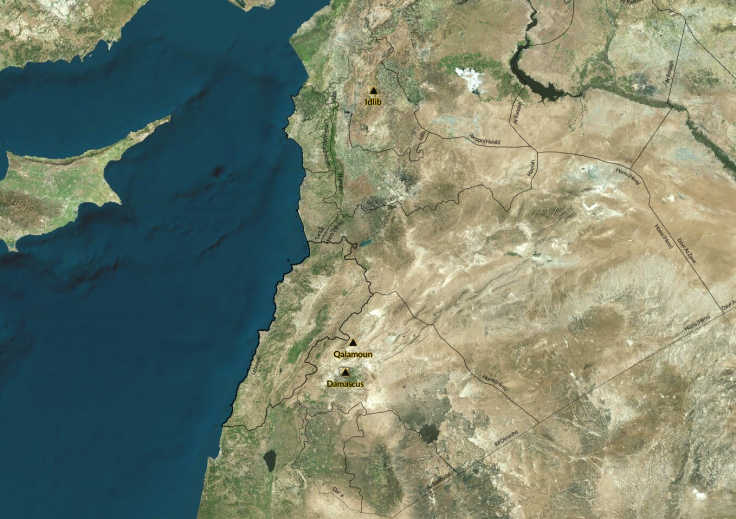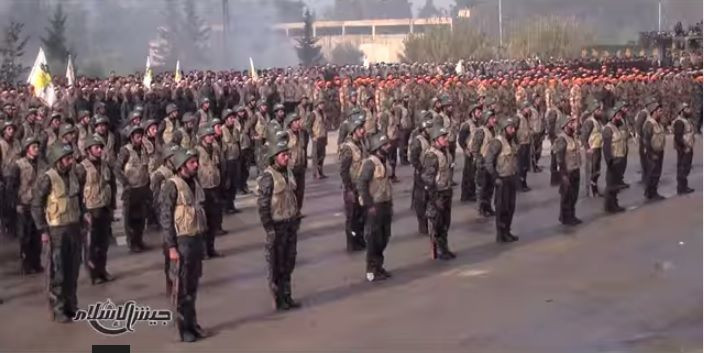The 'Battle Of Spring' Brewing Near Damascus Threatens Assad's Capital

Syrian rebel factions are preparing for what is likely to be a decisive battle on the northern Syrian border with Lebanon. The uptick in fighting around that border region coincided with operations by rebels in the south, making it one of biggest unified rebel advances on Syrian President Bashar Assad’s territory in recent years, and one that could threaten the regime’s very citadel in downtown Damascus.
The operation on the border between Lebanon and Syria, which local media has dubbed the “Battle of Spring,” began Monday, according to rebel sources on the ground, pitting pro-Assad militants from Lebanon-based Hezbollah, the Shiite group that supports Assad, against rebel factions led by Jabhat al-Nusra, the Syrian branch of al Qaeda, comprised of Sunni militants.
Hezbollah fighters framed the fighting, which is occurring in the Qalamoun border region, as an “existential battle” to maintain their stronghold in the border area, but also to protect the regime’s vital supply lines from Lebanon to Damascus, where Assad’s forces are currently fighting rebels closing in on the regime from the suburbs.
“Before, offensives were done in a far more piecemeal fashion,” said Phillip Smyth, a University of Maryland researcher focused on Lebanon and Syria. “You had Jabhat al-Nusra doing X and three rebel groups doing Y and Z. Now, there is much more unified drive toward certain strategic prizes.”

Rebels fighting Hezbollah in Qalamoun likely coordinated operations with their southern counterparts in and around Damascus. Over the weekend, rebel factions working with Nusra fighters have launched several successful attacks against regime forces inside of Damascus. Nusra claimed responsibility for a motorcycle suicide bombing that killed a regime general. Pro-Assad forces also launched an attack, seizing a key rebel supply line from Maydaa to Eastern Ghouta, which could cut off rebels in the south.
But it’s Assad who stands to lose the most from a defeat in this battle.
“Key terrain in the Qalamoun border region is inevitably linked to the security of Damascus, because of the supply lines that transit through there that are necessary for the Assad regime,” Jennifer Cafarella, a Syria analyst at the Institute for the Study of War, said.
Both sides had been preparing for the Qalamoun battle since September, but clashes came to a halt in the winter months. Over the weekend, Nusra units in the mountainous border region between Lebanon and Syria began issuing calls for Sunni Muslim fighters to join the battle. Hezbollah forces have reportedly been doing the same, calling on Shiites and Alawites in Lebanon’s Bekaa valley to join the fight in Qalamoun.
The coordinated attacks in both Qalamoun and the Damascus suburbs could bring rebels closer than ever to Assad’s center of power. If successful, the dual rebel offensive could put regime strongholds like Latakia and Aleppo under threat, in addition to severely limiting Hezbollah’s ability to move around and even evicting them from key positions on the border. That would deal a major blow to the region where the Alawites, the Shiite-offshoot sect to which Assad belongs, are concentrated.
“You would be separating out the Alawite heartland from Damascus, which would be a huge deal,” Smyth said. “You would be boxing in Hezbollah. Hezbollah would be stuck in the Bekaa and if they nail them in Qalamoun it would make communication links very hard. It would make sending in fighters very hard.”
The offensive also shows an unprecedented rebel unity, under the guidance of Jabhat al-Nusra. A major part of Nusra’s successful strategy in recent months has been to partner with various rebel factions that range from extremist brigades to more moderate Islamist groups in operations against Assad’s forces and on direct attacks against Hezbollah.

The rebel strategy in Qalamoun draws from the “joint operations room” strategy first used successfully at the battle for Idlib last month, where a coalition led by Jabhat-al Nusra was able to seize the province from regime forces -- only the second of Syria’s 13 provinces to fall under rebel control since the beginning of the war.
“Any time rebel groups, are able to deepen coordination you do start to see an increased level of effectiveness in operations against Assad,” Cafarella said, adding that this coordination “could provide increased momentum to the recent string of rebel victories.”
Two of the other major rebel groups in Syria are already showing signs of adopting a similar cooperation.
Though it may not be a full-blown merger, the groups -- Ahrar al Sham and Jaish al Islam -- will likely engage in “deepening cooperation,” said Abdul Karim al-Kurdi, a ranking member of Jaish al Islam, an Islamist opposition brigade that operates chiefly in the Damascus area and is thought to be less extreme than Nusra, told a Damascus-based news outlet. A coordinated offensive to fight Assad’s forces would see an increase in the rebels’ “overall combat power,” Cafarella said.
A new rebel coalition could also benefit from an increase in support from states in the region. In recent weeks several reports circulated that Turkey and Saudi Arabia were working with various rebel factions to prepare a Syrian intervention aimed at ousting Assad.
Jaish al Islam commander Zahran Alloush has been in Turkey since mid-April, reportedly for negotiations between the rebel factions and the two countries. Recent images and videos disseminated on the web by Jaish al Islam already show the presence of more sophisticated weaponry in the group’s hands. Ahrar al Sham has been receiving aid from Turkey. Regional powers could increase aid if the two groups can prove they are able to make significant gains against Assad, experts said.
“It is possible that a condition of increased Turkish or Saudi support is a merger between the two groups or some kind of a new framework,” Cafarella said. “It feels like the sands are shifting.”
© Copyright IBTimes 2024. All rights reserved.






















